Curlew Sandpiper, Krombekstrandloper, Sichelstrandläufer, Pilrito-de-bico-comprido, Correlimos Zarapitin
Spotted in the Alentejo region of Portugal. Curlew Sandpiper sound
The Curlew Sandpiper (Calidris ferruginea) is a small wader that breeds on the tundra of Arctic Siberia. It is strongly migratory, wintering mainly in Africa, but also in south and southeast Asia and in Australasia. It is a vagrant to North America.
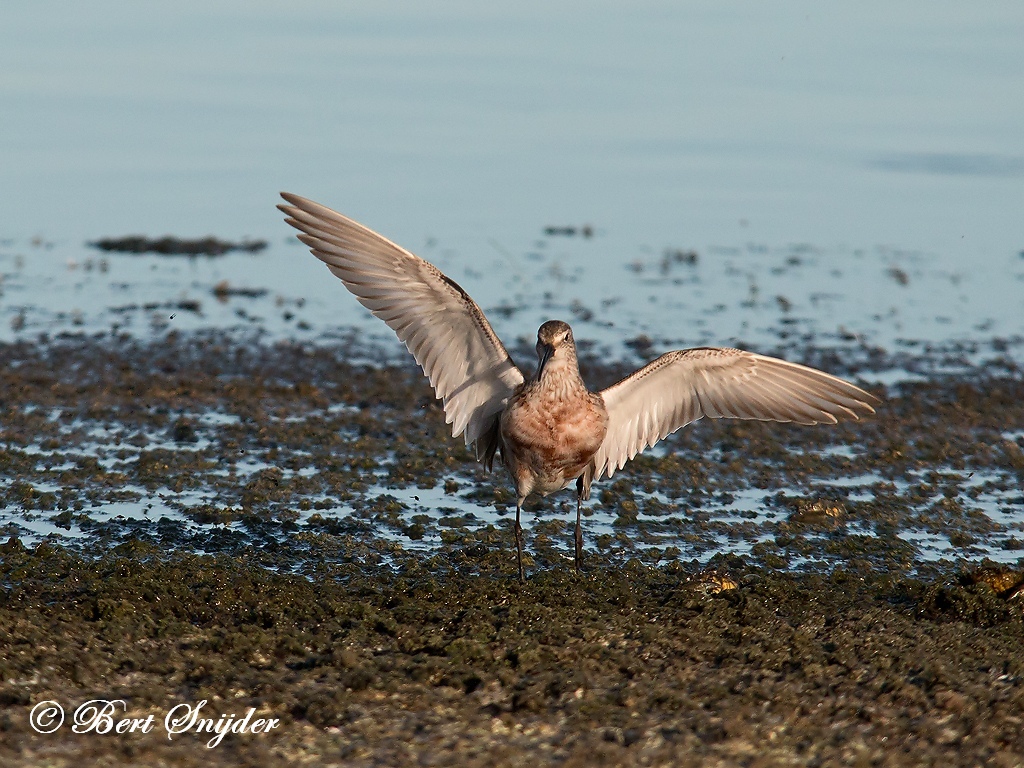
More photos at the bottom of this page:
These birds are small waders, only slightly larger than Dunlin at 19.5–21 cm in length, but differ from Dunlin in having a longer down-curved bill, longer neck and legs and a white rump. The breeding adult has patterned dark grey upperparts and brick-red underparts. In winter, this bird is pale grey above and white below, and shows an obvious white supercilium. Juveniles have a grey and brown back, a white belly and a peach-coloured breast.
The male Curlew Sandpiper performs an aerial display during courtship. The clutch of 3–4 eggs are laid in ground scrape in the tundra and taiga, mostly in Siberia.
It is extremely difficult to measure breeding success or population trends in their breeding grounds because nests are scattered over a vast region and their positions influenced by localised weather.
Of all shorebird species, the curlew sandpiper has the smallest breeding range in relation to its non-breeding range. After breeding these birds migrate south to Africa, Australasia or India. South Africa is at the southern limit of the migration path from Siberia, 15 000km or 130 degrees of latitude away.
This wader is highly gregarious, and will form flocks with other calidrid waders, particularly Dunlin. Despite its easterly breeding range, this species is regular on passage in western Europe, presumably because of the southwesterly migration route.
It forages in soft mud on marshes and the coast, mainly picking up food by sight. It mostly eats insects and other small invertebrates.
The numbers of this species (and of Little Stint) depend on the population of lemmings. In poor lemming years, predatory species such as skuas and Snowy Owls will take Arctic-breeding waders instead.
Counts of the birds in South Africa, specifically at Langebaan Lagoon where they are most numerous, indicate a 40 percent decline in numbers between 1975 and 2009. A similar trend has been noted in Australia and may be linked to effects of global warming at the breeding grounds.
This species occasionally hybridizes with the Sharp-tailed Sandpiper and the Pectoral Sandpiper, producing the presumed “species” called “Cooper’s Sandpiper” (“Calidris” × cooperi) and “Cox’s Sandpiper” (“Calidris” × paramelanotos), respectively.

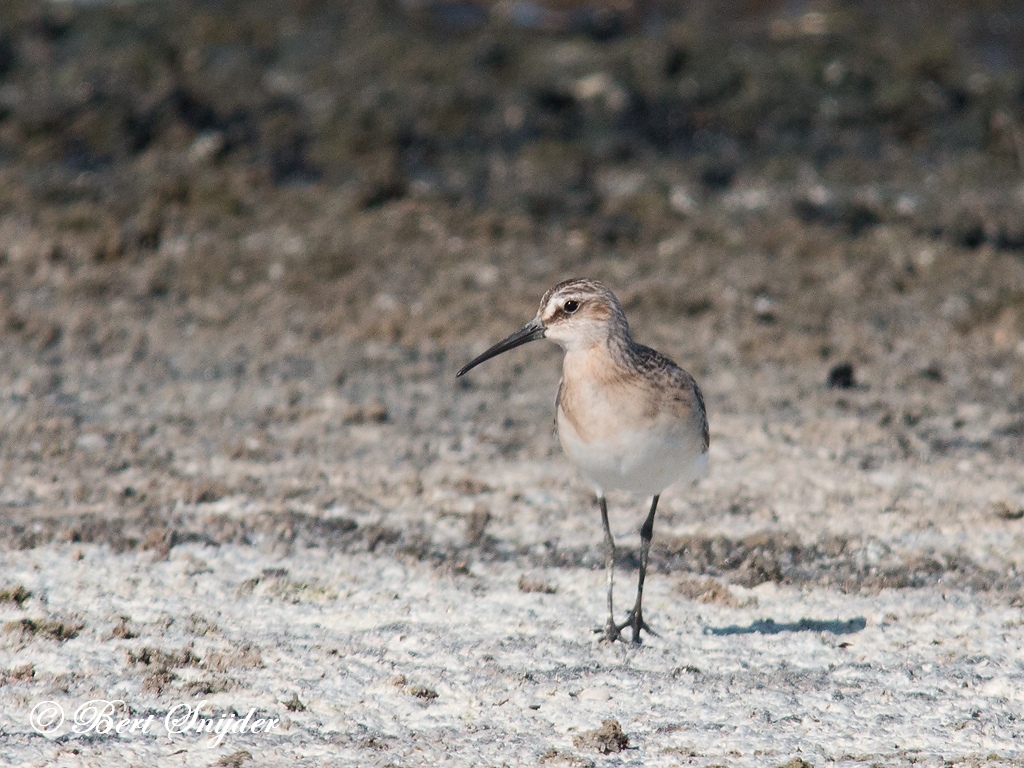
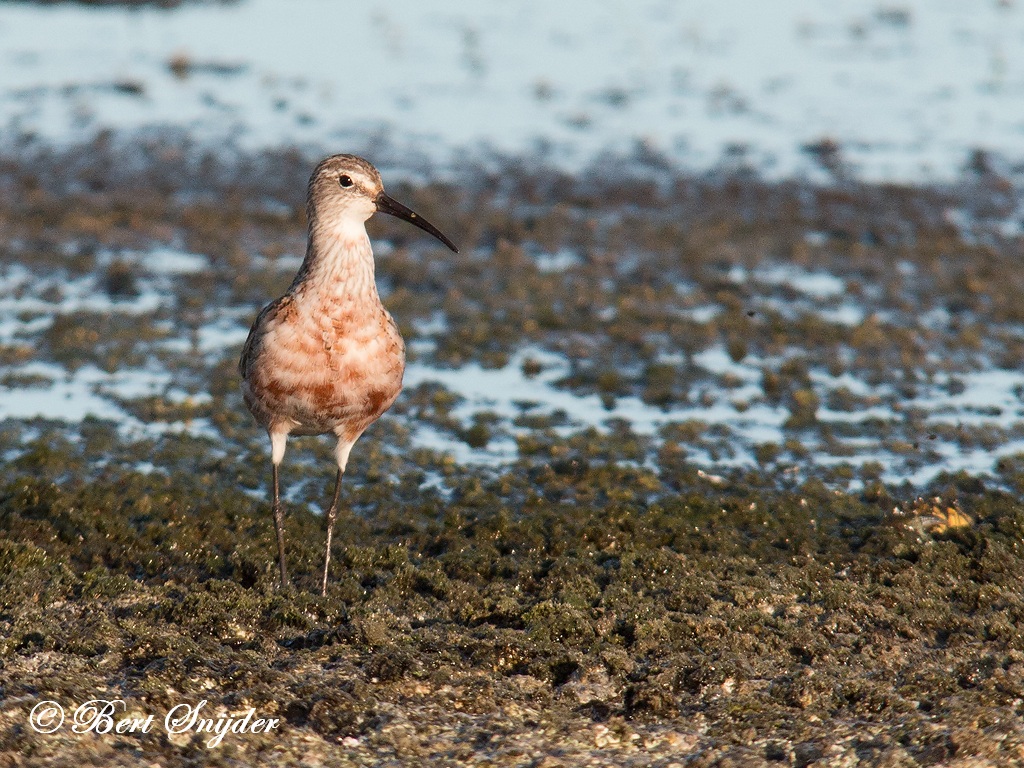
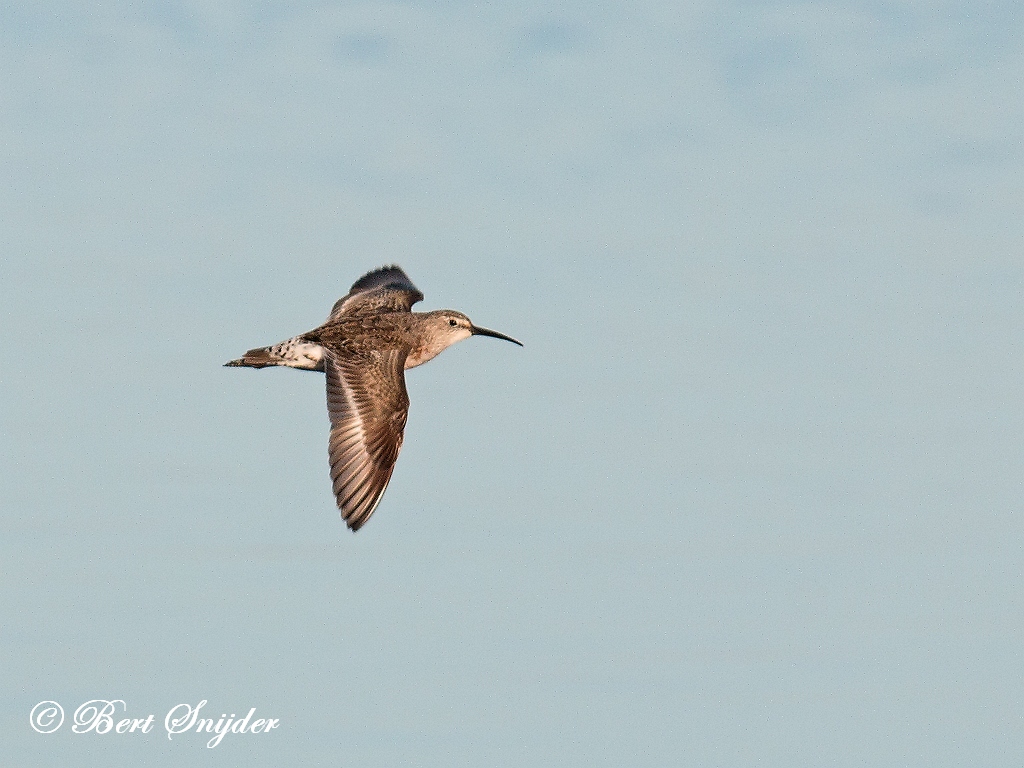
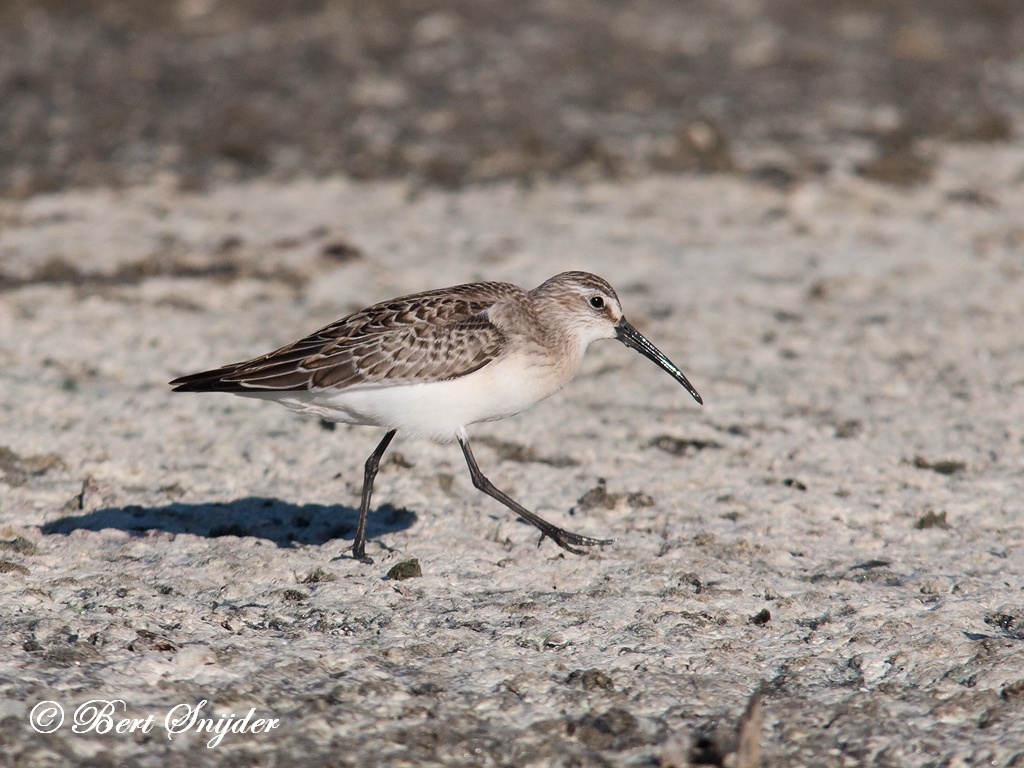
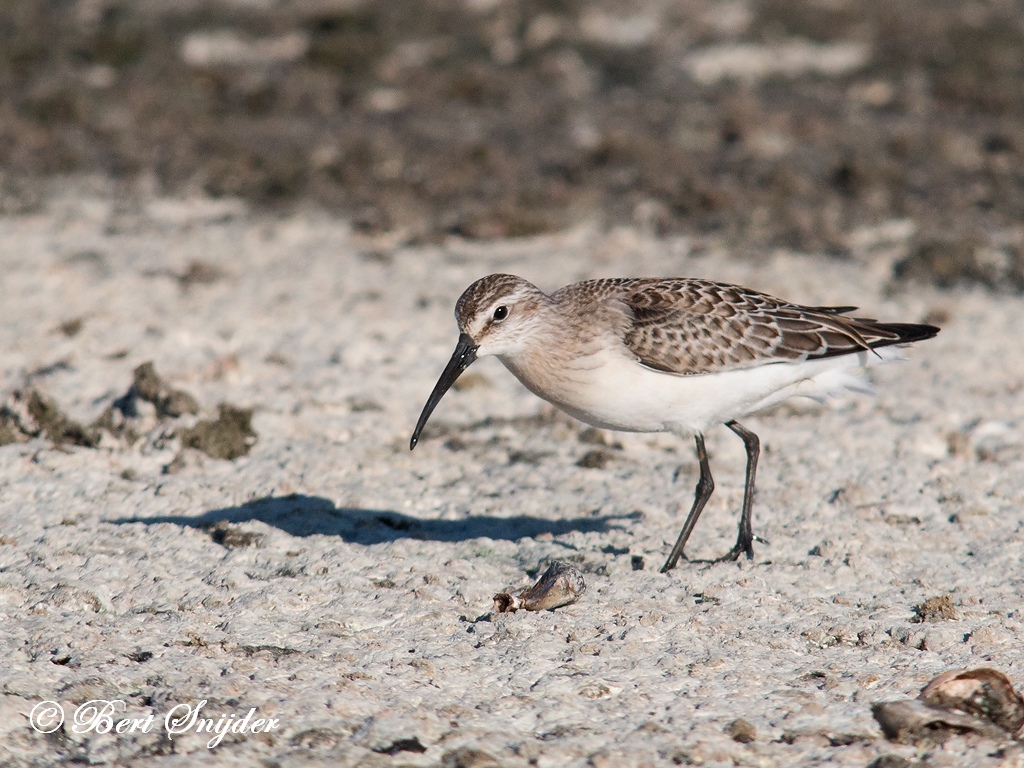

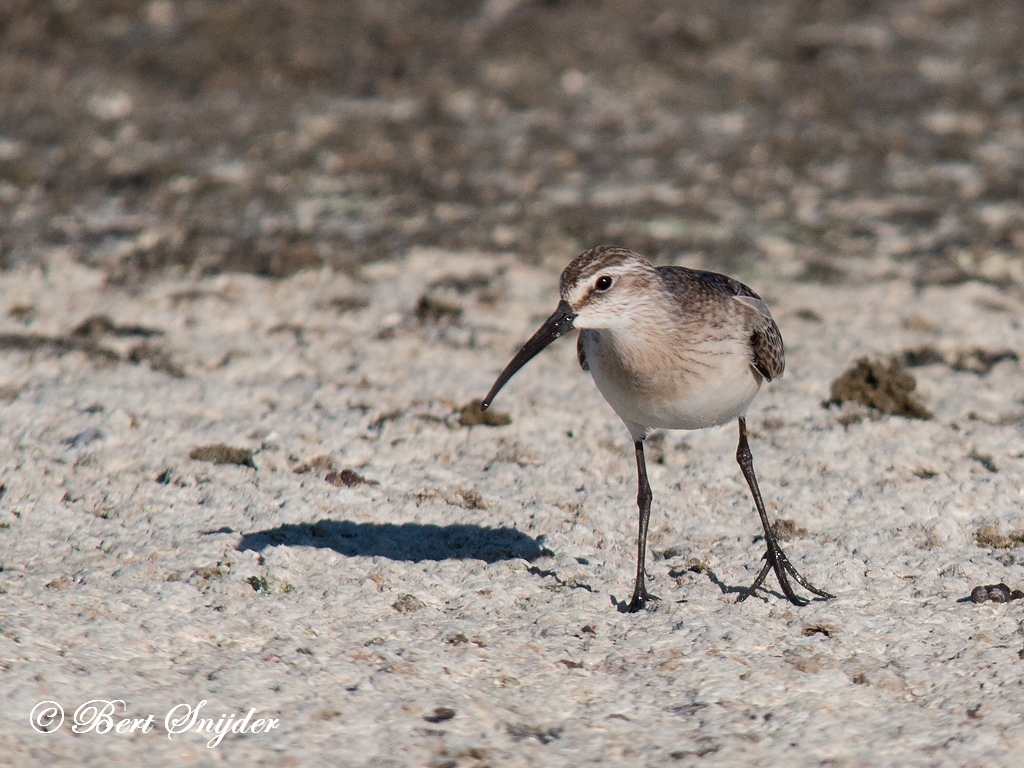
Other synonyms:
Afrikaans: Krombekstrandloper
Asturian: Mazaricu Ferruñosu
Breton: Ar sourouc’han beg kromm
Catalan: Corriol becllarg, Territ becllarg, Territ bec-llarg, Territ de temminck
Catalan (Balears): Corriol becllarg
Valencian: Territ de temminck
Czech: jespák køivozobý, Jespák krivozobý
Welsh: Pibydd cambig, Pibydd gylfinog
Danish: Krumnæbbet ryle
German: Sichelstrandlaeufer, Sichelstrandläufer, Sichel-Strandläufer
English: Curlew Sandpiper
Esperanto: rustkalidro
Spanish: Correlimos zarapatín, Correlimos Zarapitin, Correlimos Zarapitín, Playerito errante, Playero Zarapitín
Spanish (Argentine): Playerito errante
Spanish (Colombia): Playero Zarapitín
Spanish (Costa Rica): Correlimos Zarapitín
Estonian: Kõvernokk-risla, Kõvernokk-risla, kõvernokk-rüdi, kõvernokk-rüdi, kõvernokk-rüdi (kõvernokk-risla), Kõvernokk-rüdi e. kõvernokk-risla
Basque: Territ becllarg, Txirri kurlinta
Finnish: Kuovisirri
Faroese: Reyðgrælingur
French: Bécasseau cocorli
Irish: gobadáinín crotaigh, Gobadán Crotaigh
Gaelic: Luatharan Crom
Galician: Pilro ferruxento, Territ becllarg
Manx: Looyran crottagh
Croatian: Krivokljuni Žalar
Hungarian: Sarlós partfutó
Indonesian: Kedidi golgol
Icelandic: Spóatíta
Italian: Piovanello, Pivonello comune
Japanese: Saru hama-shigi, saruhamashigi, Saru-hama-shigi, Saruhama-shigi
Cornish: Pyber Gelvynak
Latin: Calidris ferruginea, Calidris subarquata, Calidris testacea, Ereunetes ferrugineus, Erolia ferruginea, Erolia testacea, Tringa ferruginea
Malay: Kedidi Pasir Kendi
Maltese: Beggazzina îamra
Dutch: Krombek strandloper, Krombekstrandloper
Norwegian: Krumnebbsnipe, Tundrasnipe
Polish: biegus krzywodzioby
Portuguese: Pilrito de bico comprido, Pilrito-de-bico-comprido
Romansh: Rivarel dal bec tort
Scots: Luatharan crom
Slovak: Pobrežník krivozobý
Slovenian: srpokljuni prodnik
Albanian: Gjelëza gushëkuqe
Serbian: Krivokljuni blataric, Krivokljuni žalar, Krivokljuni žalar (blataric), mrki blataric,
Swedish: Spovsnäppa
Swahili: Chokowe Domo-sululu
Travel Birdwatching Holiday Alentejo, Vacation Portugal for birders to see birds on your trip. Guided Birdwatching Tours & Trips